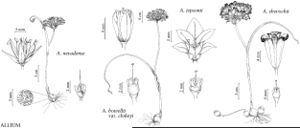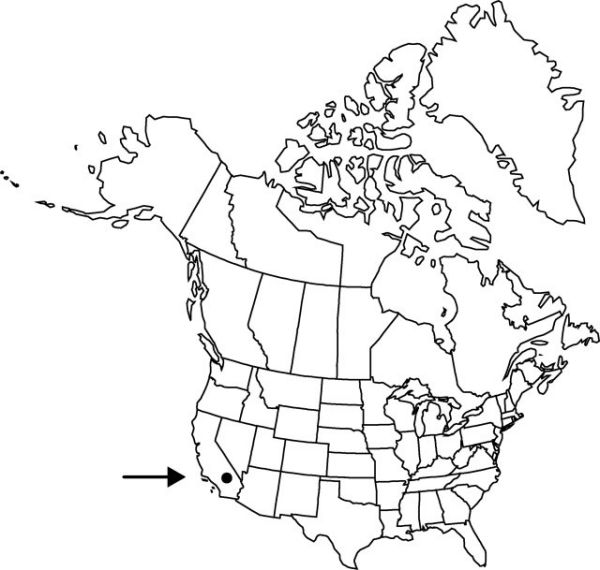Allium shevockii
Madroño 34: 150, fig. 1. 1987.
Bulbs 2–10+, forming threadlike rhizomes, rhizomes 3–10 cm, terminated by bulbels and/or 1–2 basal bulbels that in turn may produce threadlike rhizomes, ± globose, 1–1.5 × 1–1.5 cm; outer coats enclosing single bulb, brown, membranous, lacking cellular reticulation or cells arranged in only 2–3 rows distal to roots, ± quadrate, without fibers; inner coats light yellow, turning reddish on drying, cells obscure, ± quadrate. Leaves persistent, withering from tip by anthesis, 1, basally sheathing, sheath not extending much above soil surface; blade solid, terete, 20–40 cm × 2–4 mm. Scape persistent, solitary, erect, solid, terete, 10–20+ cm × 1–5 mm. Umbel persistent, erect, compact, 12–30-flowered, globose, bulbils unknown; spathe bracts persistent, usually 3, 5–7-veined, lanceolate, ± equal, apex apiculate. Flowers campanulate, 12–14 mm; tepals spreading, unequal; outer tepals maroon, oblanceolate, margins irregularly shallow-toothed, apex acute to mucronate, reflexed-curled; inner tepals maroon distally, white proximally, ovate, withering in fruit, curled back at tip, margins entire, apex acute, reflexed; stamens included; anthers yellow; pollen yellow; ovary crested; processes 6, prominent, narrowly triangular, margins entire, apex emarginate; style linear, equaling stamens; stigma capitate, 3-lobed, lobes slender, recurved; pedicel 10–16 mm. Seed coat shining; cells minutely roughened. 2n = 14.
Phenology: Flowering Jun–Jul.
Habitat: Soil pockets on schist outcrops
Elevation: 2200–2400 m
Discussion
Of conservation concern.
Allium shevockii is known only from the upper slopes of Spanish Needle Peak in the southern Sierra Nevada and from Horse Canyon, Tehachapi Mountains.
Selected References
None.

